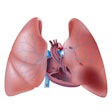Using advanced imaging following the onset of ischemic stroke to identify patients who would benefit from mechanical clot removal does not improve patient selection for use of the technology, according to a study published on Friday in the New England Journal of Medicine.
Using CT or perfusion MR to identify patients with a favorable penumbral pattern, indicating salvageable brain tissue, did not affect outcomes at 90 days, regardless of whether the patient had undergone the clot-removal procedure or received standard therapy, wrote Dr. Chelsea Kidwell, from Georgetown University, along with co-authors from several other U.S. centers (NEJM, February 8, 2013).
The study team hypothesized that patients would benefit from the clot-removal procedure if they had scans showing that less than 70% of the brain had died in areas affected by reduced blood flow.
Despite the lack of evidence supporting the effectiveness of clot-removal devices in improving outcomes, they are widely used in patients who arrive at the hospital too late for tissue plasminogen activator (t-PA) therapy, and dramatic results have been seen in some patients, the authors noted.
Whether brain imaging can identify candidates who will benefit from therapies for acute ischemic stroke and whether these therapies improve outcomes is unknown, they wrote.
The 118 patients in the study (mean age, 65.5 years) were randomly assigned within eight hours after symptom onset to receive mechanical embolectomy (64 patients) or standard therapy (54 patients). Randomization was stratified according to whether the patient had a favorable penumbral pattern with substantial salvageable tissue or a nonpenumbral pattern represented by a large core or small or absent penumbra.
Revascularization was achieved in 67% of the embolectomy group. Ninety-day mortality was 21%, and the rate of symptomatic intracranial hemorrhage was 4%; these rates were similar across the groups, the researchers wrote.
Mean score on the modified Rankin scale did not differ between the two groups (3.9 for both, p = 0.99). Embolectomy was not more effective if the patients had a favorable penumbral pattern (3.9 for embolectomy versus 3.4 for standard care, p = 0.23) or a nonpenumbral pattern (4.0 for embolectomy versus 4.4 for standard care, p = 0.32), according to the group.
"A favorable penumbral pattern on neuroimaging did not identify patients who would differentially benefit from endovascular therapy for acute ischemic stroke, nor was embolectomy shown to be superior to standard care," Kidwell and colleagues wrote.
The results could be due to several factors, including the relatively low rate of revascularization in the embolectomy group, which was perhaps due to the use of first-generation devices, they wrote. Newer-generation stent retrievers have shown both higher revascularization rates and better outcomes.



















